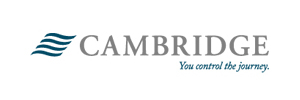Quote of the Week
“Strength does not come from physical capacity. It comes from an indomitable will.” – Mahatma Gandhi
Technical Corner
This year has been a wild ride.
After the worst economic collapse since the Great Depression of the 1930s and 30 million newly unemployed Americans struggling amidst an economic shutdown, the U.S. economy is slowly re-opening and bouncing off its lows.
Every investor must now grapple with the extremely uncertain question of whether the U.S economy will quickly recover or a more challenging work-out period is about to commence.
To help contextualize our fundamental outlook for the U.S. economy, I will break the COVID-19 shock into what I think are four separate phases.
Phase One: COVID-19 shock and economic shutdown collapse combined with mature Credit Cycle dynamics (i.e., U.S. corporate debt at an all-time high).
Phase Two: A too early public health policy re-opening of the economy, creating a bounce in economic data off the shutdown lows.
Phase Three: Permanent job loss accelerating at the fastest rate since the Great Financial Crisis (2008-2009), causing deepening inventory levels, almost no capex (companies investing back in themselves), and corporate profit cycle recessions.
Phase Four: Eventual economic recovery.
Wall Street is projecting a “V” shaped recovery. I disagree. I expect a “W” shaped recovery. We have had the initial down movement and a somewhat weak upward recovery of the “W” via all the government fiscal stimulus from an infusion of cash by the Fed, enhanced Government unemployment insurance, and small business help from the PPP program. With the deadlock in Washington, those programs are on hold for the time being.
The virus is not even close to being under control and unbelievable lack of concern for others by half of the population, I am discouraged for any semblance of a strong economic recovery until there is a vaccine.
Larry’s Thoughts
College Disrupted: Students Face High Costs and Pandemic Impact
Even in normal times, it can be challenging for families to cover college expenses without borrowing money and/or risking their own retirement security. For the 2019-2020 academic year, the cost of in-state tuition, fees, room, and board at a four-year public college averaged $21,950, and the total for a private college approached $50,000.1
Sadly, the college world is not immune from the health fears and financial pain inflicted by the coronavirus pandemic. More students might choose schools that are less expensive and/or closer to home, take a year off, or forgo college altogether. The American Council on Education predicted a 15% decline in college enrollment nationwide for the next academic year.2
With the financial futures of students and supportive parents at stake, it is more important than ever for families to make informed college decisions.
Reopening plans
As of August 5, 2020, about 29% of the nearly 3,000 institutions tracked by The Chronicle of Higher Education had announced plans for an online fall semester, 23.5% were planning to hold classes primarily or fully in person, 16% were proposing various hybrid models of in-person classes and remote learning, and the remainder were still undecided.3
To reduce campus density and make room for social distancing in classrooms and residence halls, many colleges are inviting 40% to 60% of students back to campus (prioritizing freshman or seniors, certain majors, programs with clinical requirements, and students with unsafe home situations, for example) while expanding and improving remote teaching capabilities for students studying at home.4 Some colleges have backtracked on earlier plans to reopen due to a surge of the virus, and more could follow suit as events unfold.5
A new landscape
Students who live on campus or attend classes in person are likely to find strict rules and restrictions regarding safety practices (physical distancing, face coverings, virus testing) and changes in many facets of campus life, including living situations, food options, class settings, social gatherings, and popular extracurricular programs such as arts and athletics.
Acknowledging that students are not getting the college experience they wanted and are now more price sensitive, many schools are freezing tuition, and others are offering discounts, increasing scholarships, or allowing students to defer payments.6 In anticipation of $23 billion in revenue losses, colleges nationwide have also had to lay off employees, reduce salaries, eliminate programs, and make other budget cuts.7-8
In mid-March, Moody’s Investors Service downgraded the outlook for higher education from stable to negative, citing reduced enrollment. Institutions with large endowments and/or strong cash flows are better positioned to withstand the crisis, but lost tuition poses a bigger threat to smaller colleges.9
Shopping for schools
High school students who are involved in the planning and application process might be lucky to enter college after the worst of the health crisis is over. Still, more economic hardship means that cost could play a greater role in school selection.
Many students don’t pay published tuition prices, and financial aid packages differ from school to school. After identifying schools that might be a fit, families can use net price calculators to compare how generous different colleges might be, based on the household’s financial situation and the student’s academic profile.
Before choosing a school, students should understand how much they might have to borrow and what the monthly payment would be after college. It’s also important to take a hard look at earning potential when choosing an academic program. Those who plan to enter lower-paying fields may fare better if they keep costs down and borrowing to a minimum.
Seeking financial aid
To receive grants and/or loans, students must complete the Department of Education’s Free Application for Federal Student Aid (FAFSA) and apply for aid according to the college’s instructions as early as possible. Higher-earning families should also fill out the FAFSA because they may qualify for more need-based aid than they might expect, and some schools may require a completed FAFSA for merit-based scholarships.
College students with parents who have lost a job or earned less income than normal this year due to COVID-19 may want to appeal for a revised aid package, if not for fall then for spring. The financial aid administrator may be able to reduce the loan component of a student’s aid package and/or increase the scholarship, grant, or work-study component.
Will college pay off?
The average college graduate earns $78,000 per year, compared with about $45,000 for the average worker with a high school diploma. The wages of workers without a college degree tend to fall more during recessions, and they are more likely to be unemployed, as seen during the pandemic.10
A 2019 Federal Reserve analysis of the cost (four years of tuition and lost wages) and the benefits (higher lifetime earnings) concluded that a college degree is a sound investment for most people; the average rate of return for a bachelor’s degree is about 14%.11
When Fed economists adjusted this analysis to account for the 2020 pandemic, the return on a college degree rose to 17% (under the assumption that many workers with a high school diploma would be unemployed for a year). For a student who takes a gap year, the estimated return dropped to 13%. The $90,000 cost of a delay includes one year’s worth of post-graduation earnings and slower growth in wages over a lifetime.12
Remote learning may not be a perfect substitute for in-person interactions and relationships, especially for students enrolled at expensive institutions. Still, motivated students can grow intellectually and work toward a degree that could be valuable in terms of future earnings and social mobility.
Many colleges may be able to utilize their investments in technology and online curriculums long after the pandemic passes, providing future undergraduates with more opportunities to earn an affordable college degree remotely.
1) College Board, 2019
2, 7) American Council on Education, 2020
3) The Chronicle of Higher Education, August 5, 2020
4, 9) The New York Times, July 7, 2020, and May 12, 2020
5) NPR.com, July 22, 2020
6, 8) Inside Higher Ed, April 27, 2020, and June 29, 2020
10-12) Federal Reserve Bank of New York, 2019-2020
Copyright 2020 Broadridge Investor Communication Solutions, Inc











